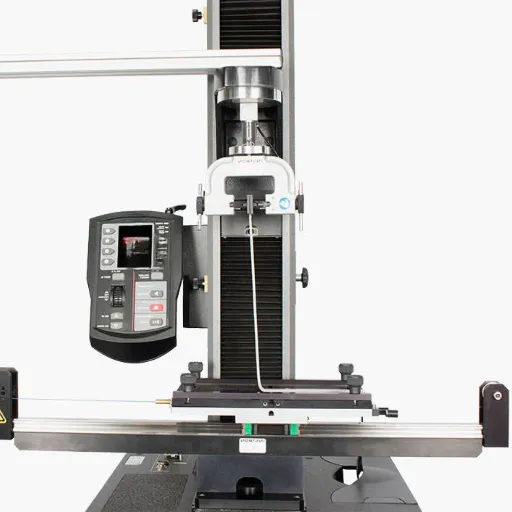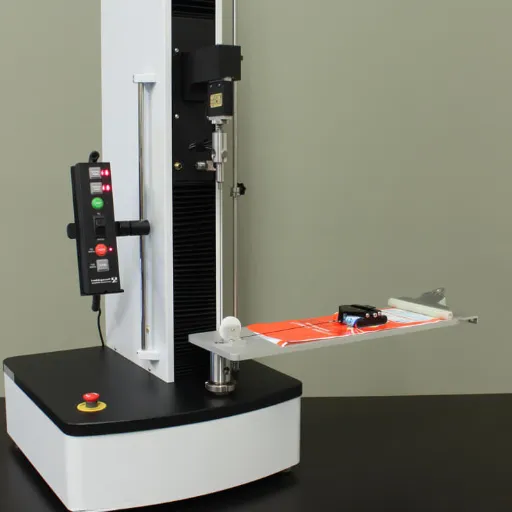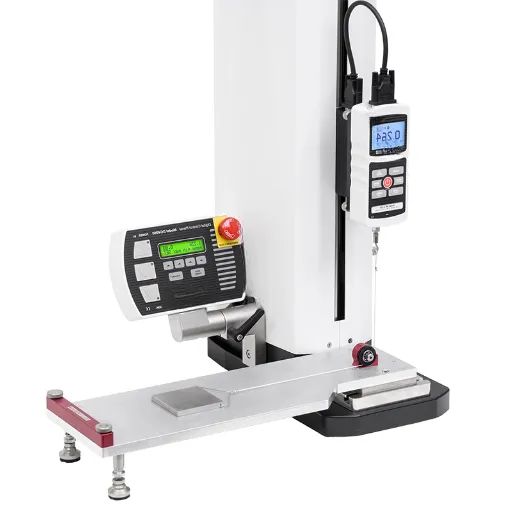It is essential to know the implications of engine compression to run and even troubleshoot engine problems. A compression test method is too simple, yet very effective as it allows the vehicle’s owner or the mechanic to diagnose if there are any issues with the engine or rather engine cylinders – whether rings on the pistons have worn out, the valves and seats are cut etc. Also in this very article, and under the same headline, we shall look at all aspects of engine compression tests, their importance, the equipment used, and the correctness of results. So, mechanically inclined individuals, seasoned automobile mechanics and zealots will find this helpful and practical enough for the preservation of the engine.
What is a Compression Test?
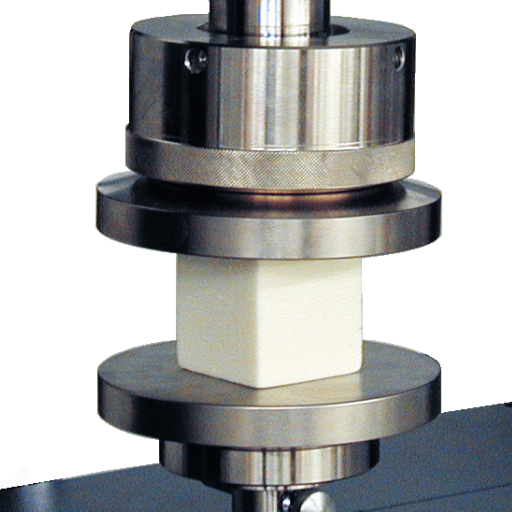
Compression check is a process of checking the pressure levels in the cylinders of a motor while the compression cycle is taking place. The test helps in checking the state of most essential parts of the engine including the piston rings, the valves, the cylinder head gasket among others. The readings of the pressures from all the cylinders can be evaluated so as to determine if there are any problems such as low compression which contributes to poor performance, low fuel economy or even engine breakdown.
Definition and Purpose of a Compression Test
A diagnostic compression test involves determination of an engine’s cylinder’s internal pressures in the course of a compression stroke. The test appears as an absolutely necessary tool for introduction of the normal engine operation and the analysis of many other building parts of the internal combustion engine such as the piston rings, the intake and the exhale valves, the cylinder head and its gasket. The diagnostic and repair intervention, being the main aim of compression testing is to prevent such engine issues that obstruct the operation of the engine as designed. Such issues include worn-out piston rings that allow excess gases to escape, valves that do not seal properly, or a damaged head gasket leading to pressure loss.
Lately, the advancements in the automotive diagnostic tools have highlighted the importance of compression testing as the foundation of engine performance testing. As there is an increasing trend towards more fuel-efficient and environmentally friendlier machinery, compression variations have become crucial to be identified and dealt with in time. Differences in cylinder pressure measurements, which are now possible with more accurate equipment, are readily associated with problems such as firing of cylinders, loss of power and pollution issues. Compression testing, therefore, is not only helpful in performing preventive maintenance on vehicles but also represents the current society’s vision on sustainable utilization of engines and environmental protection.
Importance of Engine Compression
The efficiency of combustion, as well as the general performance of the engine, depends largely on the Engine Compression. The right amount of compression allows efficient ignition of the air-fuel mixture as expected which provides optimum power and economy with minimum emission. In circumstances of low or uneven compression across the cylinders, it represents painful problems such as worn out piston rings, burnt valves, or damaged head gasket which are all detrimental to the engine’s efficiency. Compression problems are identified and dealt with early enough to avoid further wear and tear on the components or even lengthening the useful life of more important fixed parts. Available modern diagnosing solutions to this issue – electronic compression testers – allow high accuracy in assessing the engine condition and emission adherence levels. The main aim, therefore, is to achieve a well-balanced compression that will enable stabilizing the engine’s operation and promoting green policies.
How Compression Affects Engine Performance
Compression is a basic determinant of how efficient an engine would be, how powerful it is and how it functions in general. As far as I know, thermal efficiency is enhanced by higher compression ratios, and this subsequently increases fuel economy and the power capacity of the engine. Of course, having too much of compression can also be in effective in the engine because of the risk of knocking which is not favorable in terms of the performance capacity of the engine and even its durability. A progressive engine design seeks to strike a balance where the values of compression are carefully controlled to meet performance requirements while keeping pollutants low. During maintenance proper compression should be ensured in order to sustain the engine condition and the norms imposed by the environment authorities.
How to Perform a Compression Test
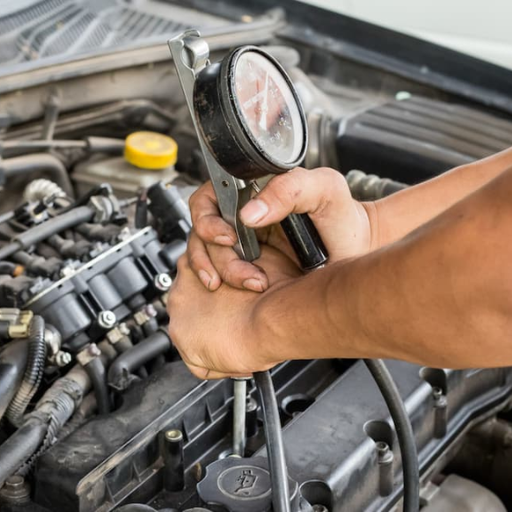
1.Gather Devices
For a compression test to begin, one should have a compression tester, a spark plug socket, a ratchet and an extension. Make sure the engine is no longer heated before attempting the work since it can cause burns.
2.Switch off the Ignition
Deactivate the ignition coil or system so that the engine does not start up in the course of the test. Check the car’s owner manual if you need guidance on how to do this.
3.Take Out Spark Plugs
Carefully unscrew each of the spark plugs from the engine using the ratchet and spark plug socket so that there will not be any inconsistencies in pressure measurements across the cylinders.
4.Insert the Compression Tester
Screw the selected compression tester into the specific pore of the cylinder under investigation. Tighten it well to avoid any air in the system while taking the reading.
5.Crank the Motor
Using the battery and the starter, rotate the engine for about 4 to 6 times before stopping. This is the length of cranking required for the compression gauge to reflect the greatest amount of cylinder pressure achieved.
6.Note and Infer the Results
Take the readings shown on the gauge and do it for every cylinder. Then assess whether any readings deviate from the specifications for that cylinder, particulary for conditions such as broken pistons or valves, burst gaskets etc.
7.Fix Back the Spark Plugs and Fix the Ignition
After the assessment, it may be possible to replace the spark plugs and ignition in order to return the engine to working condition.
These steps help in accounting for the current condition of the compression power in your engine, as well as aid in efficient mechanical troubleshooting.
Tools Needed for a Compression Test
In order to properly and effectively complete a compression test, one will need the following instruments.
1.Compression gauge – This is a special gauge that is created to check internal pressure of each and every cylinder. Various fittings are often present so that a person can use them with every size of spark plug.
2.A ratchet accompanied with a socket for the spark plugs – This assists in the removal and installation of the spark plugs without damaging them in any way.
3.Extension – This provides extra length that is needed in order to reach deeply buried spark plugs.
4.Torque wrench – This is to ensure that the spark plugs are not re-filled in an over aggressive way because torquing has been controlled, hence, the work changes.
5.Battery charger – This can be optionally key when testing a car requiring excessive engine cranking.
6.Paper towels or shop towels – These positions serve both as tools for cleaning some residue as well as to absorb over excess oils that are surrounding the spark plug holes.
One should have all the equipment ready so that they do both the compression test and in case they are needed, perform the engine problems diagnosis in an effective manner.
Step-by-Step Guide to Performing an Engine Compression Test
1.Secure the Automobile
For compression testing to be realistic, the engine must be warm since temperature affects cylinder stress simulation. Switch off the engine and unhook the ground wire of the battery to ensure the motor cannot be turned on during the test.
2.Ensure Ignition And Fuel Supply Is Cut Off
The ignition system and fuel pump, if applicable, must be disabled to prevent injection of fuel or spark in the cylinders. Usually, this involves pulling specific fuses/relays or shutting some connectors.
3.Get Rid of the Spark Plugs
A ratchet or a spark plug socket should be used to remove all spark plugs carefully. With all the plugs out, the engine can spin more freely ensuring correct readings of the cylinder pressure besides guarding against differences in resistance from one cylinder to another.
4.Check the Spark Plug Holes
Look at the plug holes on each cylinder hole before commencing the compression test for any foreign material or oil. Wipe clean or close off using rags, or compressed air, in order to avoid foreign substances from going into the combustion chambers when testing.
5.Fit the Compression Gauge
Fit the adapter of the compression gauge to the first cylinder’s spark plug hole. Make sure it is snug fit to avoid leakage of air during the test.
6.Start the Engine
While keeping the throttle completely opened, start the motor using the starter. Do this only for 5 to 6 turns or until the needle on the gauge almost stops moving.
7.Observation of the Reading
Observe the compression pressure shown by the gauge. Take the compression descent values of all cylinders and bearing in mind the factor for future approximation.
8.Perform the Steps Above on Other Cylinders
Withdrawing the compression tester from the given cylinder that is being tested and doing these steps over the other consecutive cylinders and recording all the readings as this will act as a prognosis tool.
9.Conclusion and Interpretation of the Results
Check the significance of both sets of compression values against the ones provided by the engine manufacturer. Differences that are prominent in cylinder readings, especially those that are lower than those given as benchmarks, may point to problems like worn out pistons, valves, or blown head gaskets.
10.Fix the Engine Back
After testing, replace the spark plugs, and reconnect any ignition or fuel system parts that have been removed. Connect the battery ground terminal.
11.Check Whether Everything has been Assembled Correctly
Re-start the engine and check whether everything has been properly assembled and that the started engine is functioning normally. If abnormal operation is observed, carry out further tests as may be necessary.
Applying this methodical procedure will help you identify any issues with the engine’s internal parts and determine whether further fixes will be needed or not.
Common Mistakes to Avoid During the Test
1.Neglecting Initial Assessment
One should always conduct initial assessment in automobile diagnostics since components that exist in a vehicle can sometimes cause deficient results and damage if not carefully unplugged before tests.
2.Using Inappropriate Devices or Apparatus
When the technician uses inappropriately or incorrect apparatus to conduct tests, there may be a problem that affects the correct diagnosing of the machine.
3.Ignoring Safety Regulations
They do not attempt to do certain safety practices like disconnection of the battery or avoiding improper handling of hot parts, resulting in someone being injured or damage to the system.
4.Ignoring Manufacturer’s Instructions
Sometimes, the manufacturer includes specialized useful information and specific procedures on how the testing should be carried out, but most people tend to ignore these instructions which result in the wrong assessment and repair.
5.Being Overly Hasty
When one runs the tests at hand very rapidly and without perceptible and due care taken for detail, some problems will not be noticed during the first round and will involve more efforts afterward. In the most cases the additional adjustments are needed because the piston rings fail to seal the appropriate combustion chamber thus reducing the engine compression test efficiency.
Types of Compression Tests
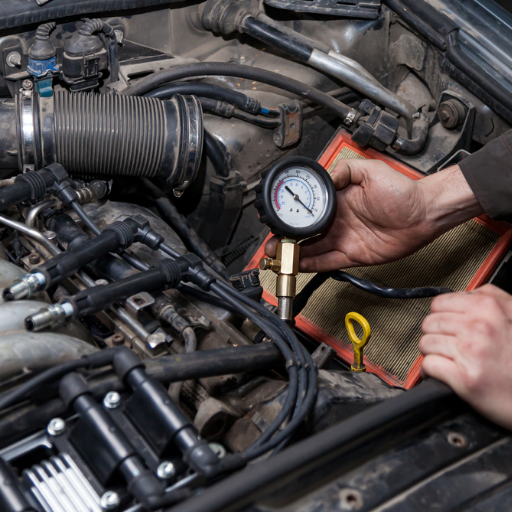
Compression tests are commonly divided into static, dynamic, uniaxial, biaxial, triaxial, cyclic, and isotropic types.
|
Type |
Description |
Purpose |
Key Metric |
|---|---|---|---|
|
Static |
Gradual load applied |
Material strength |
Stress/Strain |
|
Dynamic |
Rapid load application |
Impact behavior |
Energy/Deform |
|
Uniaxial |
Single-axis loading |
Tensile/Compressive |
Axial Stress |
|
Biaxial |
Two-axis loading |
Multidirectional |
Lateral Stress |
|
Triaxial |
Three-axis stress |
Shear/Stress Analysis |
Principal Axes |
|
Cyclic |
Repeated loading cycles |
Fatigue Assessment |
Load Cycles |
|
Isotropic |
Equal pressure in all directions |
Material Uniformity |
Deformation |
Static Compression Tests
In material failure mechanics, the relevance of static compression test is brought about by the demand to forecast material behaviour when the material is subject to compression force that is to be gradually applied over time. Principally, the said tests are design to assess significant properties of compressive strength, modulus of elasticity and other deformation behaviour. The tests entail increasing the compressive forces on a specimen until its failure, which allows proper description of the material loading into categories of static condition. This information is very valuable while undertaking structural or material design where one expects go mainly compressive loads. It is the reasons why standards such as ASTM E9 and ISO 604 are quite common when one talks about such type of standard testing and measurements.
Dynamometer Compression Tests
These dynamometer compression tests refer to the measuring and analysis of the compressive forces that are being applied to different components or materials for controlled testing purposes. These tests employ a dynamometer that is constructed to measure mechanical force, torque, or power by means of accurate sensors and recording systems. This typically involves the implementation of a load that compresses the material or system to the extent that it can no longer bear the load and measuring its strength, deformation, or failure ability.
Such a test can be applied, for example, in evaluating the parts of the engines, say, pistons or valves that have to carry compressive forces through the loads that are dynamic in nature during the activity of the engine. Study results provide information on material stability, material behavior, weak points and least strengths, which aids in the improvement of design and production processes. Reference is made to standards such as ASTM D695 or ISO 7500, which help to ensure that such tests or any other testing method using the dynamometer is both valid and reliable. These tests help many industries, including automotive, aerospace or manufacturing, as dynamometer data proves the appreciation of the materials and components, the performance of which has been changed in actual conditions.
Leakdown Tests vs. Compression Tests
Leakdown tests measure the percentage of air leakage in a cylinder, while compression tests measure the maximum pressure a cylinder can generate.
|
Key Point |
Leakdown Test |
Compression Test |
|---|---|---|
|
Purpose |
Air leakage check |
Max pressure check |
|
Method |
Pressurized air |
Cranking engine |
|
Data Unit |
Percentage (%) |
PSI (pressure) |
|
Diagnosis |
Leak sources |
Compression levels |
|
Equipment Needed |
Leakdown tester |
Compression tester |
|
Accuracy |
High precision |
Moderate precision |
|
Setup Complexity |
Advanced setup |
Simple setup |
|
Time Required |
Longer |
Shorter |
|
Key Usage |
Detect damage |
Evaluate wear |
|
Common Issues |
Valve/gasket leaks |
Ring/cylinder wear |
Using a Compression Test Kit
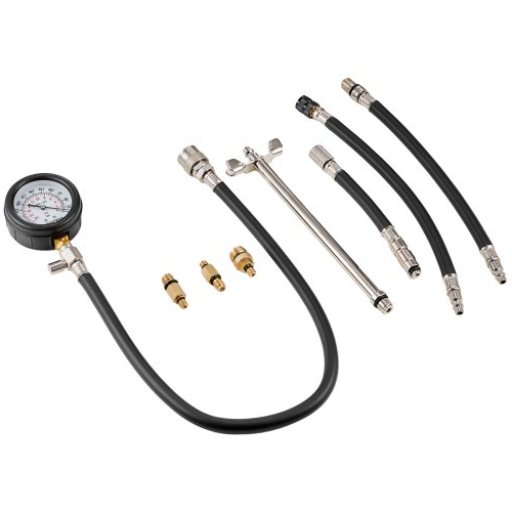
The test kits for compression serve the purpose of determining the state of the engine by determining the pressure that can be formed in each of its cylinders when it is being operated. It also allows diagnosing of problems such as worn out piston rings, cylinders with damage walls or faulty valves which may ultimately result in loss of performance of an engine.
Choosing the Right Compression Test Kit
In choosing a compression testing kit there are a few criteria, which I find necessary to be ensured in order to make sure the kit satisfies my needs. First and foremost, I look for an engine type that will work with this kit, as certain kits are petrol or diesel engine specific. Second, I make sure they have several different sizes of adaptors to enable connection to various spark plug or injector direct injectors, whichever may be. Third, since it is the main component, I pay attention to the quality of the pressure gauge found in it: its graduation has to be vivid; all hoses should be durable. Finally, I gather information regarding consumer feedback and general image of the manufacturer, basing rational choice on dependability and accuracy.
Understanding Compression Gauges and Adapters
Compression gauges are indispensable service tools constructed for: and/or assessing whether the engine is, indeed, sound, or not; any, or potential problems, if any. Normally, such gauges are provided with adapters. There aren’t two identical engine models. They cannot, however, exist without an engine, in which they will be utilized in. To ensure that the compression of the cylinder of the engine is accurately measured, they are generally threaded or push-in types to form a seal. To correctly use the gauge scope entails the adapter being clipped firmly into the port on the engine, as well as a steady fairly even rotation cranking of the test which follows the correct readings. It proves to be especially efficient in identifying defects of the rings, valves and head gaskets, thus promoting effective maintenance and repair work.
Interpreting Results from a Compression Test Kit
It is very important to include the review of the result in the diagnosis of any engine. Normally, a properly working engine shows a values of compression within the recommended range of 120 and 200 psi (depending on the manufacturers) and those with minor differences (the difference should not be more than 10-15%) across cylinders. However, when it occurs beyond this range, there is an indication of possible engine problems.
For example, low compression in a particular cylinder may signify a leaking valve, worn out piston rings, or even a scored cylinder wall. On the other hand, consistent low compression across all the cylinders may be as a result of a broken timing belt, worn out camshaft or even a blown head gasket. Higher than normal compression readings might be caused by carbon deposits build-up in the combustion chamber.
Part of the interpretation is done by comparing those values with what is specified by the manufacturers for that engine. If there are any distortions of the results which do not fall within the normal range, further diagnosis should be carried out, for instance, using the leak down test, so as to implement appropriate measures.
Diagnosing Engine Issues with Compression Tests

One more thing compression test is good at is exposing existing engine defects such as worn out (or breakable at some extent) piston rings, broken valves, or the head gasket that has cracked. If one of the cylinders has a low Rabit Healthy Socialitry ratio, then one should suspect a cylinder problem. If all the cylinders have low Rabit Healthy Socialitry ratios then one should look upthe timing of the engine or, blockage of the inlet or the exhaust. Dethroned Following Compare et Results To The Specifications specified by manufacturer and Carry Out a leak-down test shall be.factor in.the confirmation of the engine condition and their cause.
Identifying Common Engine Problems through Compression Testing
Issues of better understanding of the state of health of an engine in relation to mechanical problems can be addressed best by considering compression testing as a rectifying helper. As established from my experience, when there is a low compression in a particular or some cylinders, it is most probably the loss of valves, piston rings or even cracked cylinder walls. When compression is evenly low throughout all cylinders, I highly consider the possibility of incorrect timing, such as a slipped timing belt/chain or even something blocking the intake/exhaust. To finish the look, I measure the compression and compare it to the parameters specified by the manufacturer and then explain where the values changed. Thirdly, by recommending a further leak-down test, one will not solely guess but locate the chief the greater part of the problem; namely, is it air that is uniquely escaping through the valves, rings, or the head gasket. Such an approach enables clear and concise diagnostic conclusions.
When to Seek Professional Help
Whenever in the process of examination it reveals that an issue is beyond a few minor adjustments such as compression loss, damages within the engine or even the failure of the timing system then it is advisable to engage the services of a professional. With respect to this, I advice that when faced with issues that require special skills or tools, one should not try to attempt to reposa the problem rather go seek where a certified mechanic can be found. Performing certain complicated activities incorrectly can result in additional damages that result in the escalation of repair costs.
Preventive Measures to Maintain Engine Compression
The best way to keep the compression of the engine is by carrying out the necessary small action preventive measures. One relevant example is regular oil change and making sure only quality oils are used because this helps reduce and wear as well as lubrication of the engine moving parts. I also use a maintenance interaction schedule prepared by the manufacturer, and this helps in working out when to change, by replacing, key parts such as the spark plugs or the air filters. Furthermore, I ensure that the engine is not heated up as such, by refilling the coolants where they have depleted and checking for any possibility of a faulty cooling system and fixing it as soon as possible. Last but not the least; I prefer for example good quality petrol to prevent carbon from deposits, and it causes a malfunction of valves causing loss of compression, and movement of pistons.
Reference Sources
-
AutoZone: How to Do an Engine Compression Test – A detailed guide on performing a compression test and understanding the results.
-
CarParts: Engine Compression Test – What It Is, When You Need It – Explains the purpose and procedure of a compression test.
-
Apex Industries: What Is Engine Compression And How Is It Tested? – Provides insights into engine compression and the testing process.
-
eBay Motors Blog: How to Use an Engine Compression Test Kit – A practical guide on using a compression test kit.
-
ALLDATA: Running Compression Tests – Discusses the importance and methodology of running compression tests as a diagnostic tool.
Frequently Asked Questions (FAQs)
Q:Can you elaborate on the process of a compression test?
A: Simply put, a compression test is a method that is specifically employed in determining the compression level in a car engine. A few tests are usually carried out on automobile engines upon getting rid of the spark plug or injector then a compression gauge is also used to evaluate the pressure that is built up in each cylinder. It helps to explain some difficulties regarding the performance of the engine particularly lack of compression or timing of the valves.
Q: What are the effects of loss of compression on engines?
A: Reduction in Cyclic compression can have a significant impact on the working of the engine as it becomes less powerful, uses more fuel than usual and idles roughly. When this happens, it means that the cylinder not contributing power as it should causes poor acceleration and general decline in output.
Q: Is it possible to conduct compression testing in diesel vehicles?
A: Diesel engines can also undergo compression testing, yes. That exercise is primarily done to measure the compression of the engine, since the operation of such engines is based on high compression combustion. Diesel engines may have different testing requirements from gasoline engines, but the basics remain unchanged.
Q: What is the sign of normal compression in an engine?
A: Normally, for healthy engines, the readings of compression span a range from 100 psi to 200 psi in accordance with the engine design and parameters. Usually, at most 10% difference of the reading between cylinders is recommended so as to make sure every cylinder has equal balancing. But if any of the cylinders is in the lower limit of these readings, then it is a potential problem such as broken piston rings and burnt valves.
Q: What is the process of compressing the fuel system during the compression test?
A: In order to effectively disable the fuel system for a compression test, you must get rid of the fuel pump fuse or fuel pump relay. This will ensure that the fuel isn’t being pumped to the engine during the test to make sure that the readings of compression are as accurate as possible without involving any issues related to fuel supply.
Q: What is the significance of oil in compression tests?
A: Compression testing can utilize oil to ascertain the cause of low compression. When drops of the engine oil are introduced into the cylinder which has prolonged low readings caused by listening valves or worn out piston rings, the diagnosis can be given. If those values are restored after adding oil, then it is the internal part of the engine which has problems.
Q: Are carbureted engines also subject to compression testing?
A: Compression testing is also applicable to carbureted engines. This is because, apart from engines that use fuel injectors, those with carburetors may also have compression problems. Compression testing, once carried out on a regular basis, assists in optimum performance in solving problems that may arise from this component.
Q: Does the compression testing process involve some components of the engine?
A: The basic engine components that are involved in the compression test are the cylinder, piston ring, valve, and the engine head. Each of these components is vital for ensuring compression is achieved properly and will affect the performance of the vehicle if the components develop fault.
Q: In what way does a compression test help in diagnosis of engine issues earlier?
A: A compression test helps in diagnosis of engine issues earlier as it provides a ‘fitness’ test for the engine. Testing each cylinder regularly enables you to notice things like valve timing or cylinder wear before they become acute and expensive to remedy. There is much to be gained from this preventable intervention over the long run.

